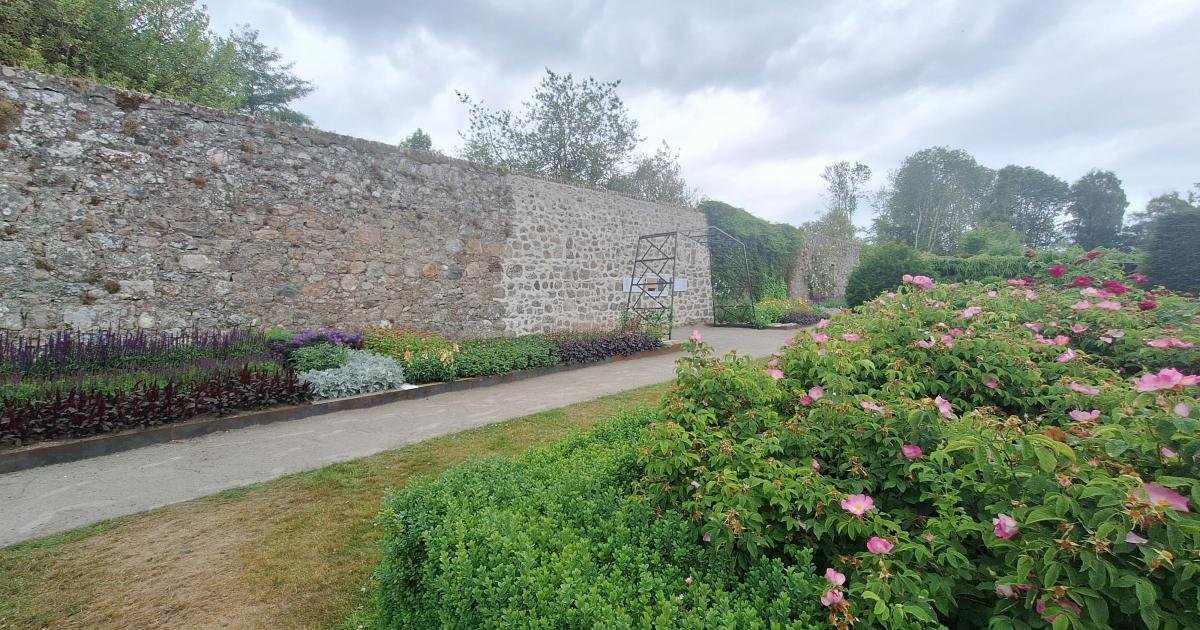
A specially curated exhibition of the works of the internationally-acclaimed print maker, who is native to the North East of Scotland, recently opened at the Castle and, inspired by one of Furneaux’s abstract works, Daguin has created a striking new planting scheme that has transformed part of Drum’s historic walled garden.
Two bold beds anchor either side of a dramatic, geometric arbour, a bespoke structure crafted by local blacksmiths in response to Furneaux’s use of line and form.

The planting itself mirrors the artist’s palette, with layered blocks of yellow, grey, blue and black flowers, contrasted against hard landscaping in natural stone. Together, they offer a dynamic visual echo of Furneaux’s work and a contemporary counterpoint to the garden’s more traditional sections, which include an old wood of ancient trees, a garden of historic roses and a play park made from natural materials, where young visitors can run off steam.
The Irvine family, owners of Drum Castle for over 650 years until the National Trust for Scotland took over its care, were significant patrons of the arts and the permanent collection boasts works by Van Dyck and Raeburn, alongside pieces by established family artists Hugh [[Irvine]] and Anna Margaretta Forbes [[Irvine]].
Another National Trust for Scotland property which has strong links to the world of art is Kellie Castle in Fife, where the garden of the 500-year old property was revived by renowned Scottish architect Robert Lorimer and then by his son, the sculptor Hew Mortimer.

The Mortimers developed an Arts and Crafts theme for the walled garden, filling it with roses, honeysuckle and delphiniums. They also turned a former archery court into a sheltered space for growing peaches, filled the bee boles set into the walls with wicker skeps and allowed hens to roam free amongst the flowerbeds.
Their aim was to recreate a traditional Scottish ‘pleasaunce’, a medieval, enclosed garden set hard against the castle, in contrast to the fashion in later centuries for setting walled gardens at some distance from the main house.

Details
The gardens at Drum Castle are open daily, 10.30am – 4pm.
The exhibition, ‘Paul Furneack: North by East’ is free to visit daily until October 31 2025. For more information, visit https://www.nts.org.uk/visit/places/drum-castle..
The grounds are open daily, dawn to dusk and entrance is free.
Tel: 01330 700334
Drum@nts.org.uk
https://www.nts.org.uk/visit/places/drum-castle
In Association with Discover Scottish Gardens www.discoverscottishgardens.org.uk









